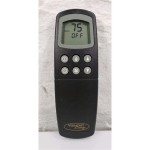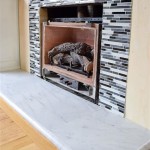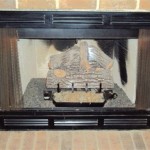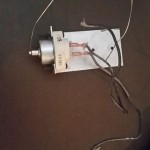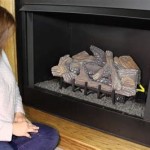Gas Fireplaces with Glass: A Comprehensive Overview
Gas fireplaces with glass fronts have become increasingly popular as a convenient and aesthetically pleasing alternative to traditional wood-burning fireplaces. These appliances offer a combination of visual appeal, ease of use, and improved safety features. The presence of a glass panel serves a crucial role in containing the flames, enhancing efficiency, and providing a clear view of the fire. This article will explore the key features, benefits, considerations, and maintenance aspects of gas fireplaces with glass, providing a comprehensive understanding for potential buyers and current owners.
The functionality of a gas fireplace with glass relies on a controlled combustion process. Natural gas or propane is supplied to a burner, which ignites to produce flames. The glass panel acts as a barrier, preventing embers and sparks from escaping into the living space. This enclosed design also contributes to better heat retention, as the glass radiates heat into the room. The integration of various control mechanisms, such as thermostats and remote controls, allows for precise temperature management and convenient operation.
The aesthetics of gas fireplaces with glass are a significant draw for many homeowners. They are available in a wide range of styles, from traditional designs that mimic the look of wood-burning fireplaces to modern, minimalist options. The glass front provides an unobstructed view of the flames, creating a focal point in the room. Decorative elements, such as artificial logs, stones, or glass beads, can be added to customize the appearance and enhance the ambiance. The design flexibility allows for seamless integration into various architectural styles and interior design schemes.
Enhanced Safety Features
One of the primary advantages of gas fireplaces with glass is the enhanced safety they offer compared to open-flame fireplaces. The glass panel serves as a physical barrier, preventing accidental contact with the fire and reducing the risk of burns. This is particularly important in households with children or pets. The enclosed design also minimizes the risk of sparks or embers escaping and igniting nearby materials, such as carpets or furniture. Modern gas fireplaces often incorporate additional safety features, such as automatic shut-off valves that activate in the event of a gas leak or malfunction. Oxygen Depletion Sensors (ODS) are also common, which shut off the gas supply if oxygen levels in the room become dangerously low.
The incorporation of a sealed combustion system further enhances safety. These systems draw air from outside the home for combustion and vent exhaust gases directly outside, preventing the introduction of harmful byproducts into the living space. This reduces the risk of carbon monoxide poisoning and improves indoor air quality. Regular inspection and maintenance of the fireplace, including checking for gas leaks and ensuring proper ventilation, are essential for maintaining safety and preventing potential hazards.
The surface temperature of the glass can become quite high during operation. To mitigate burn risks, many models incorporate a mesh screen or a secondary glass panel to reduce the temperature of the outer surface. These features are particularly important for models designed for frequent use or located in high-traffic areas. Adhering to manufacturer's instructions regarding safe operation and maintaining a safe distance from the fireplace are crucial for preventing accidents.
Improved Energy Efficiency
Gas fireplaces with glass are generally more energy-efficient than traditional wood-burning fireplaces. The enclosed design reduces heat loss through the chimney and allows for better heat retention within the room. Modern gas fireplaces often incorporate features such as electronic ignition and programmable thermostats, which further improve energy efficiency. Electronic ignition eliminates the need for a continuously burning pilot light, saving gas when the fireplace is not in use. Programmable thermostats allow for precise temperature control and can be set to automatically adjust the flame height based on the desired room temperature.
The efficiency rating of a gas fireplace is typically expressed as an Annual Fuel Utilization Efficiency (AFUE) percentage. Higher AFUE ratings indicate greater energy efficiency. Models with higher AFUE ratings can significantly reduce heating costs compared to less efficient models. Factors such as the size of the fireplace, the insulation of the room, and the frequency of use can also affect the overall energy efficiency. Selecting a model that is appropriately sized for the room and ensuring proper insulation can maximize energy savings.
Some gas fireplaces are designed to be used as supplemental heating sources, while others are intended for occasional use. Understanding the intended use of the fireplace and selecting a model that meets the specific heating needs of the space is important for optimizing energy efficiency. Regularly cleaning the glass and burner components can also improve efficiency by ensuring optimal combustion.
Maintenance and Cleaning
Proper maintenance and cleaning are essential for ensuring the safe and efficient operation of a gas fireplace with glass. Regular cleaning of the glass panel is necessary to maintain a clear view of the flames and prevent the buildup of soot or other deposits. Specialized glass cleaners designed for fireplaces are recommended, as they are formulated to remove stubborn stains without damaging the glass. A soft cloth or paper towel should be used to avoid scratching the surface.
The burner assembly should be inspected periodically for any signs of corrosion or damage. Dust and debris can accumulate in the burner ports, which can affect the flame pattern and reduce efficiency. A soft brush or vacuum cleaner can be used to remove any buildup. It is important to follow the manufacturer's instructions for cleaning the burner assembly, as improper cleaning can damage the components. A qualified technician should perform annual inspections and maintenance to ensure that all components are functioning properly and that there are no gas leaks or other safety hazards.
The area surrounding the fireplace should be kept clear of combustible materials, such as curtains, furniture, and paper. Regular inspection of the venting system is also important to ensure that it is free of obstructions and that exhaust gases are being properly vented outside the home. Any unusual smells or sounds coming from the fireplace should be investigated immediately. Consulting a qualified technician is recommended for any repairs or maintenance that require specialized knowledge or tools.
Another aspect of maintenance involves inspecting the decorative elements within the fireplace, such as artificial logs or stones. Over time, these elements can accumulate soot and debris, which can affect their appearance and potentially reduce the efficiency of the fireplace. Cleaning these elements regularly with a soft brush or vacuum cleaner can help maintain their appearance and ensure optimal performance. Replacing damaged or worn-out components is also important for maintaining the overall aesthetic appeal and functionality of the fireplace.
Understanding the specific maintenance requirements for the particular model of gas fireplace with glass is crucial for ensuring its long-term performance and safety. Consulting the manufacturer's instructions and scheduling regular professional inspections can help prevent potential problems and extend the lifespan of the appliance. Proper maintenance not only ensures the safe and efficient operation of the fireplace but also helps maintain its aesthetic appeal, enhancing the overall ambiance of the living space.
The lifespan of a gas fireplace with glass depends on several factors, including the quality of the components, the frequency of use, and the level of maintenance. With proper care and regular maintenance, a well-maintained gas fireplace can last for many years, providing a reliable source of heat and visual enjoyment. Investing in a high-quality model and adhering to the manufacturer's recommendations for maintenance can help ensure that the fireplace continues to perform optimally for years to come.

Studio Glass Gas Fires Gazco Built In Contemporary Fireplaces

We Will Be Updating Our Fireplace To Use Glass Rocks Rather Than Logs Outdoor Gas Firepit That Fire

Fireplace Installation Instructions Diamond Fire Glass

Fireplace Fire Glass Colors Magic Touch Mechanical

Studio Glass Gas Fires Gazco Built In Contemporary Fireplaces

Double Glass Flare Fireplaces

Why Does My Fireplace Have Black Glass Pros In Richmond

Superior Drl4000 60 Inch Electronic Ignition Direct Vent Gas Fireplace With Crushed Glass Media

Fireplace Glass For Fire Pits And Fireplaces

25 Fireplace Decorating Ideas With Gas Logs Electric And Glass Rocks Fire
Related Posts


